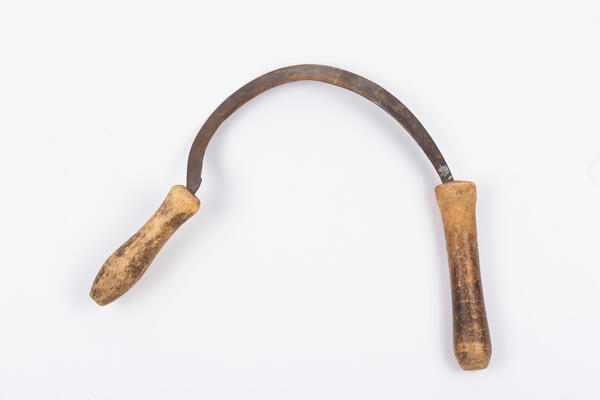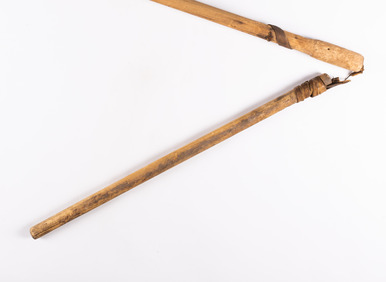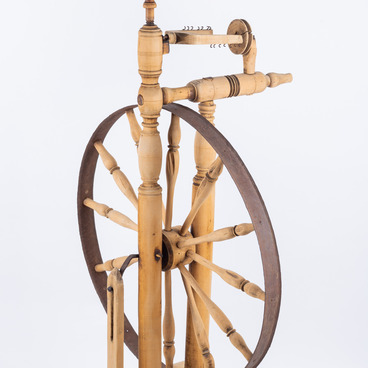This drawknife is an antique tool that carpenters used for peeling bark off timber. A traditional drawknife looked like a straight or curved blade with a single handle or two opposing handles (depending on the type).
It made whittling and making wooden rivets much easier. Drawknives also ensured the quality and durability of various vessels produced by coopers, such as tubs or vats.
These tools were also the indispensable companions of builders. For instance, fallen tree trunks had to be cleaned with a drawknife when being assembled into a log house. This gave the timber a pretty pastel shade, which looked so cosy that log house walls did not require any extra finishes.
Drawknives also came in handy for smoothing over the wavy notches on the surface of hewn wood. These tools could handle any walls, doors, window shutters and frames, and roofing boards. However, the one thing a drawknife could not handle was removing the tears after chopping off tree branches.
Aside from carpenters, drawknives were frequently used by tanners as well. Their version of a drawknife had a blade with a very distinctive S-like shape, which has firmly affixed to a wooden handle. This drawknife was used for tanning hides and leather.
Bashkir bortniks found plenty of uses for drawknives too. Bortniks were beekeepers who bred their bees in the wild, going into the woods to collect bee glue, wax, and honey. The bees could make their hives in natural environments (for instance, inside hollow tree trunks) or in the little houses that the beekeepers made for them. A house like this was known as bort'. Bort' houses were placed into hollow pines or larches that were at least a meter in diameter. The beekeepers chopped off the lower branches and the tip of the tree to keep it from snapping. They also wrapped the trunk into layers of birch bark to prevent rot.
When it was time to collect honey, the bortniks would climb the tree, taking with them a special belt made out of bast or leather, as well as a wooden support. The bort' houses were pieced together with several tools: a drawknife, a file, a drill bit, an adze, and a special axe.
It made whittling and making wooden rivets much easier. Drawknives also ensured the quality and durability of various vessels produced by coopers, such as tubs or vats.
These tools were also the indispensable companions of builders. For instance, fallen tree trunks had to be cleaned with a drawknife when being assembled into a log house. This gave the timber a pretty pastel shade, which looked so cosy that log house walls did not require any extra finishes.
Drawknives also came in handy for smoothing over the wavy notches on the surface of hewn wood. These tools could handle any walls, doors, window shutters and frames, and roofing boards. However, the one thing a drawknife could not handle was removing the tears after chopping off tree branches.
Aside from carpenters, drawknives were frequently used by tanners as well. Their version of a drawknife had a blade with a very distinctive S-like shape, which has firmly affixed to a wooden handle. This drawknife was used for tanning hides and leather.
Bashkir bortniks found plenty of uses for drawknives too. Bortniks were beekeepers who bred their bees in the wild, going into the woods to collect bee glue, wax, and honey. The bees could make their hives in natural environments (for instance, inside hollow tree trunks) or in the little houses that the beekeepers made for them. A house like this was known as bort'. Bort' houses were placed into hollow pines or larches that were at least a meter in diameter. The beekeepers chopped off the lower branches and the tip of the tree to keep it from snapping. They also wrapped the trunk into layers of birch bark to prevent rot.
When it was time to collect honey, the bortniks would climb the tree, taking with them a special belt made out of bast or leather, as well as a wooden support. The bort' houses were pieced together with several tools: a drawknife, a file, a drill bit, an adze, and a special axe.



